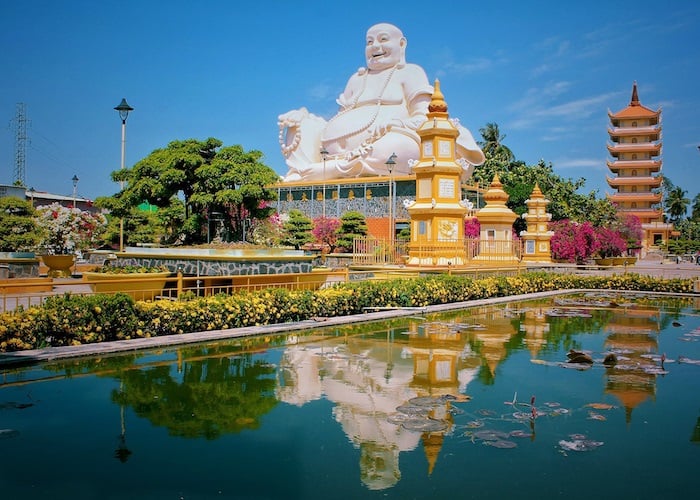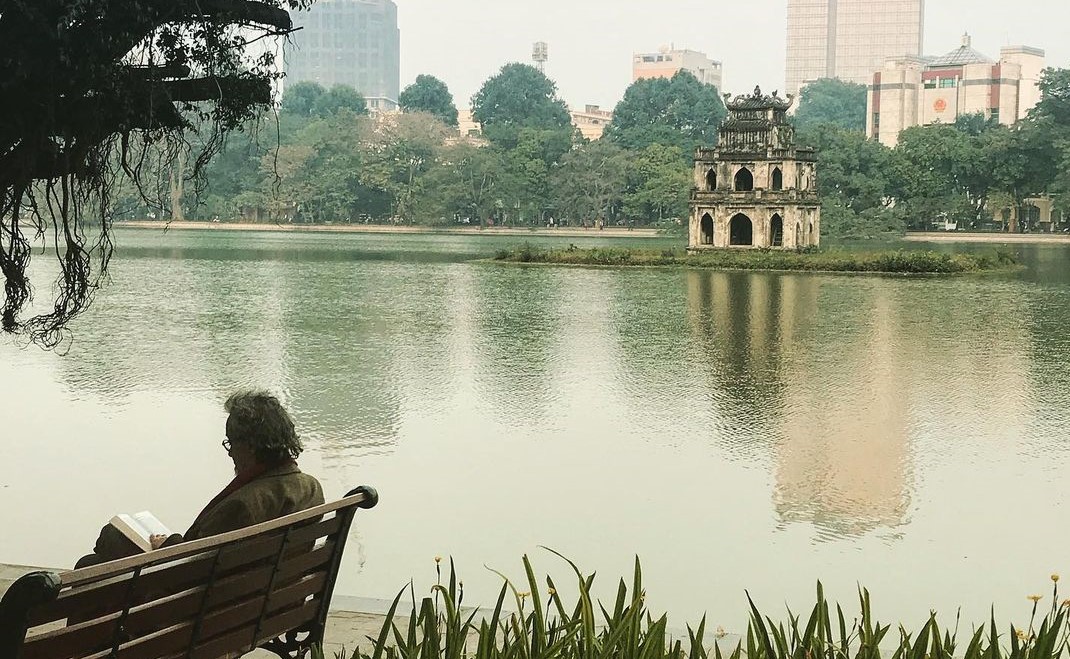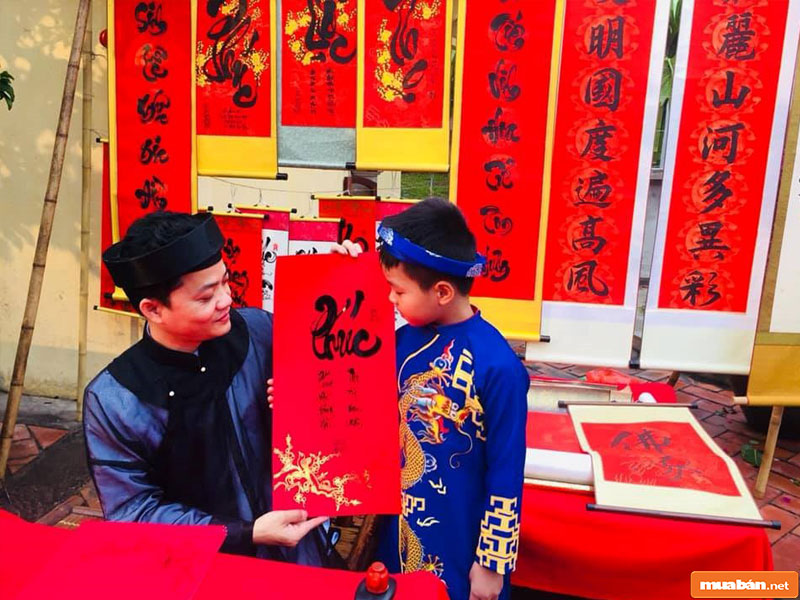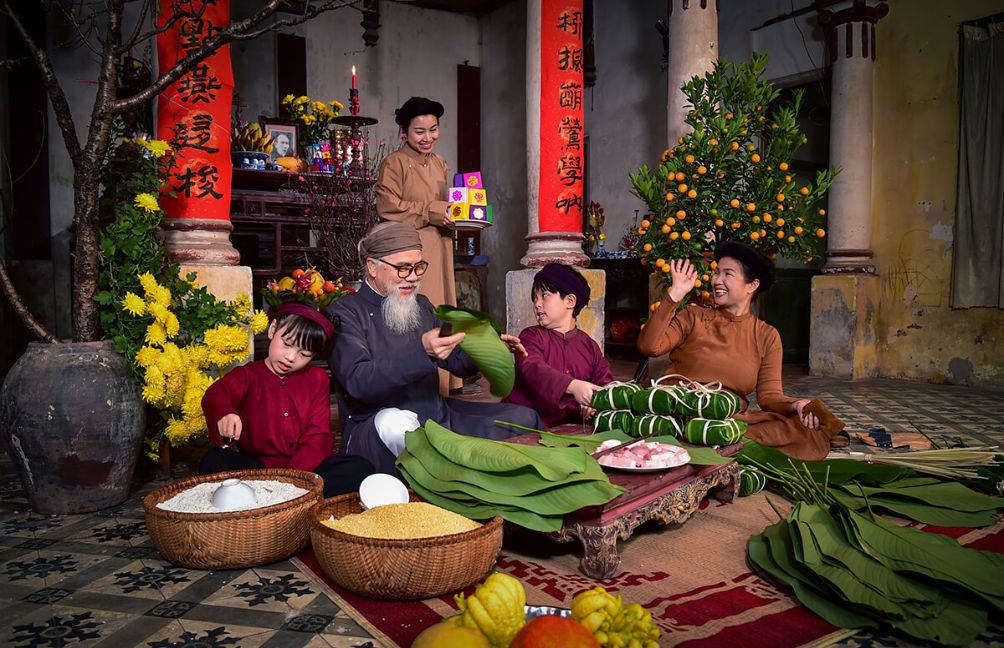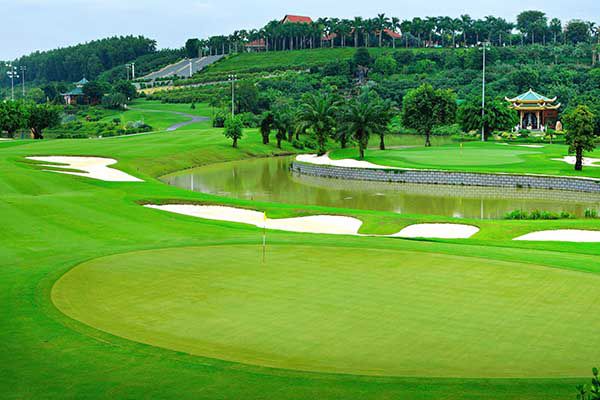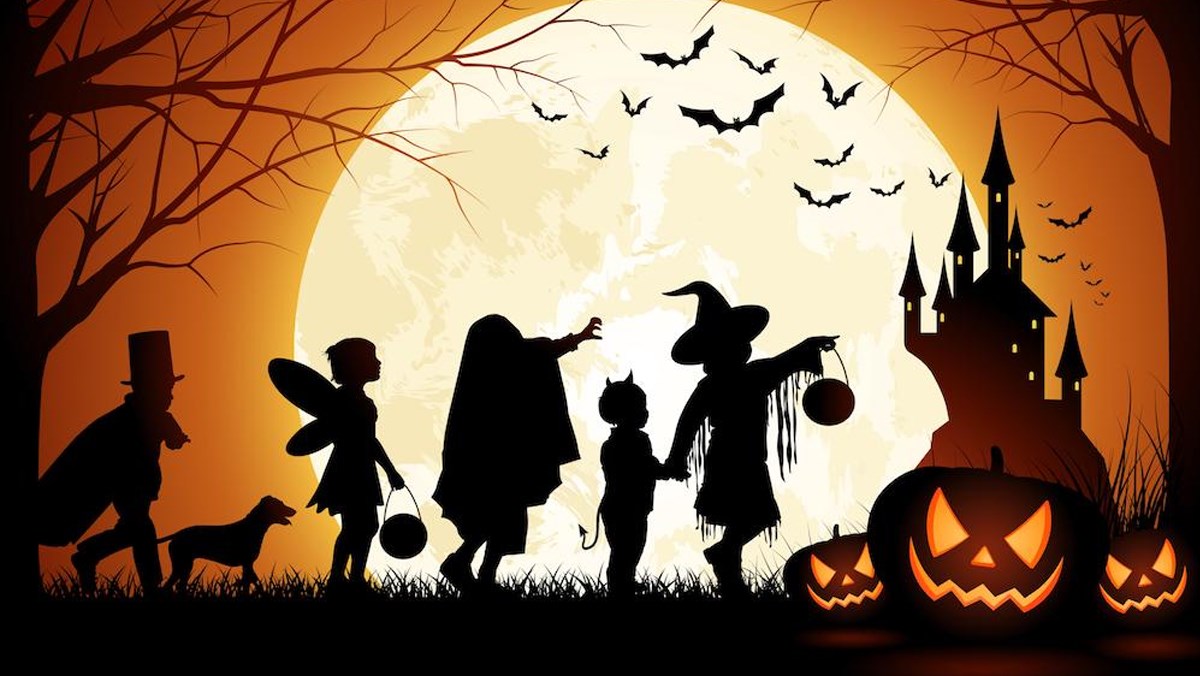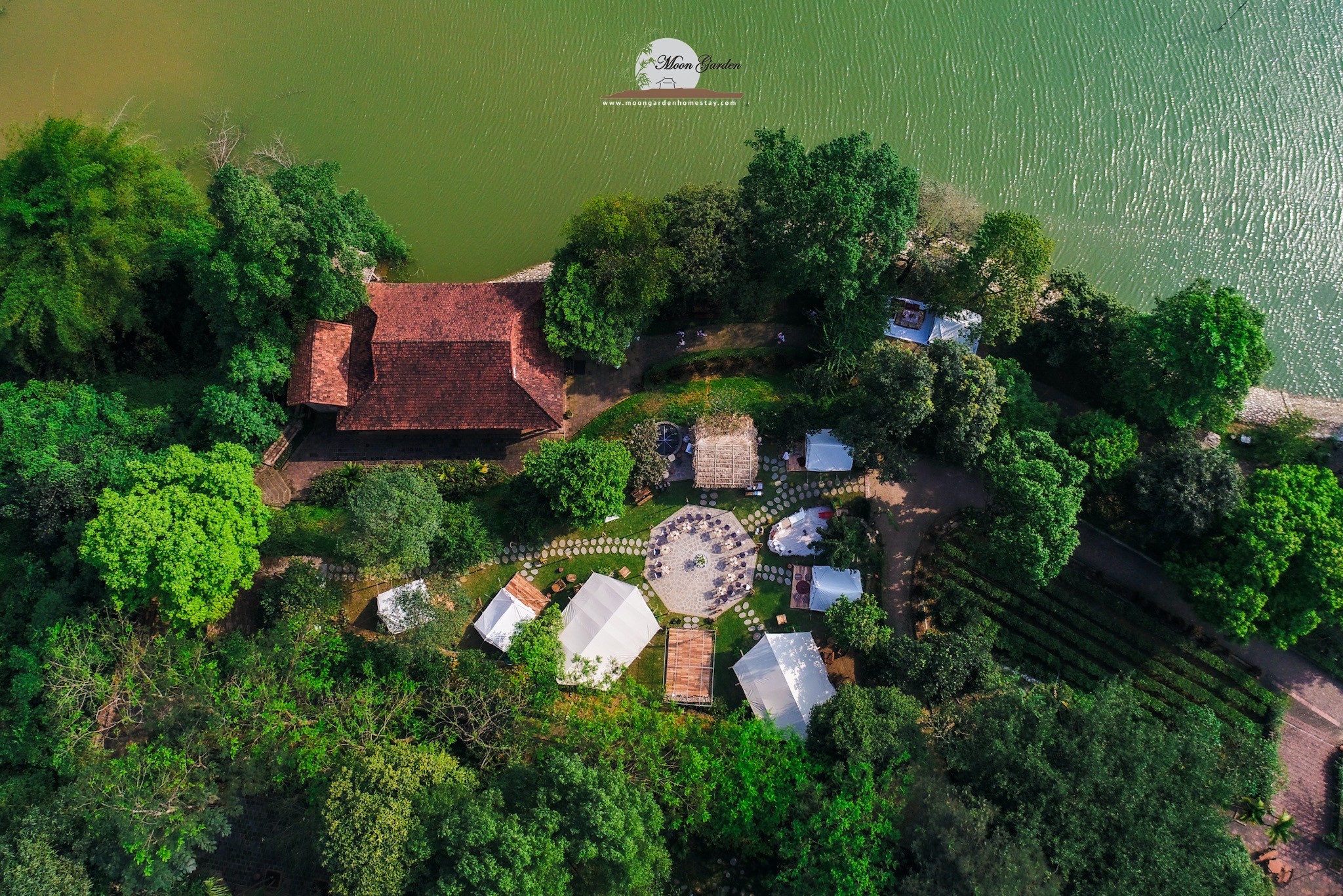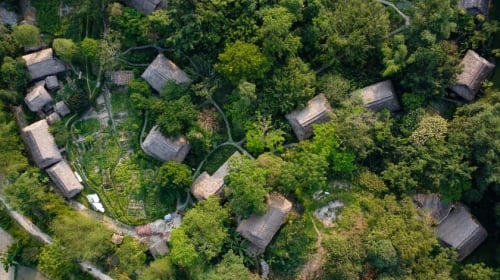In Vietnam, perhaps no other occasion is as significant as Tet Nguyen Dan (Lunar New Year). The Tet customs in the Northern, Central, and Southern regions distinctly differ in atmosphere, festive activities, and traditional celebrations. Let’s explore the differences and unique aspects of Tet culture in the three regions of North, Central, and South Vietnam in the article below.
Lunar New Year in the North – Where spring is filled with pink colors
As spring arrives, Northern Vietnam transforms into a vibrant pink portrait of cherry blossoms. Blooming across streets, from small alleys to local markets, cherry blossoms serve not only as decorative elements but also as symbols of luck and prosperity in the upcoming year. The pure pink beauty of cherry blossoms creates a dreamlike scene amidst the chilly atmosphere of the North in the early days of the year.
Peach Blossom – The symbolic flower of Tet in the North
As spring arrives, Northern Vietnam undergoes a refreshing transformation, resembling an elegant pink painting of cherry blossoms spreading across the mountains of the Northwest. The brilliance of cherry blossoms is not confined to the streets and local markets but also creates a romantic atmosphere amidst the cold of the North in the early days of the year.
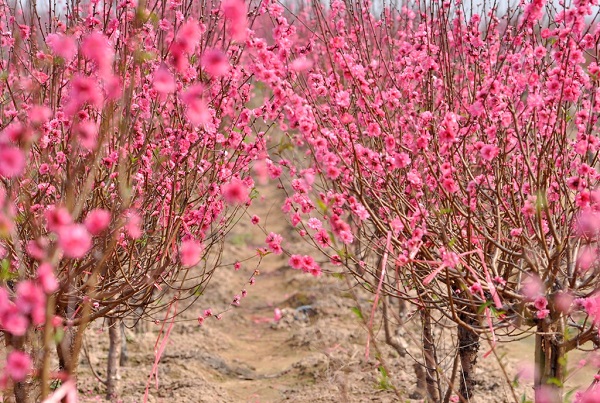
During Tet, everything becomes livelier as people, from families to businesses, joyfully purchase peach blossoms to adorn their homes. Peach blossoms not only enhance aesthetics but also carry symbolic meanings of warmth, prosperity, abundance, and good luck.
In Northern Vietnam, people often favor peach blossoms with large, multi-petaled blooms and rich colors. Additionally, wild peach blossoms and faded peach blossoms are highly appreciated for their elegant and sophisticated beauty.
Five-Fruit tray
In Northern Vietnam, the Five-Fruit tray places a strong emphasis on aesthetics, typically consisting of five types of fruits, each symbolizing a principle of the Five Elements, representing the completeness and fulfillment of life, and the blooming of flowers bearing fruit. Among them, bananas and pomelos are indispensable, carrying complementary meanings. Pomelos symbolize abundance and prosperity, while bananas represent shelter and protection. Depending on preferences and conditions, families may also include other fruits such as persimmons, oranges, or tangerines to enrich and diversify the tray, creating a warm and traditional decorative atmosphere during the Tet.

Tet feast tray – an indispensable feature in the Tet rituals of the North
Tet feast tray symbolizes gratitude toward ancestors and embodies unity, as well as the wish for prosperity and abundance in the coming year. During ancestral worship, Tet feast tray is delicately arranged with a variety of colors and flavors from traditional dishes. In Northern Vietnam,Tet feast tray often includes dishes like bamboo shoot soup, chicken, pork sausage, and jellied meat, reflecting the local culinary habits and weather conditions.
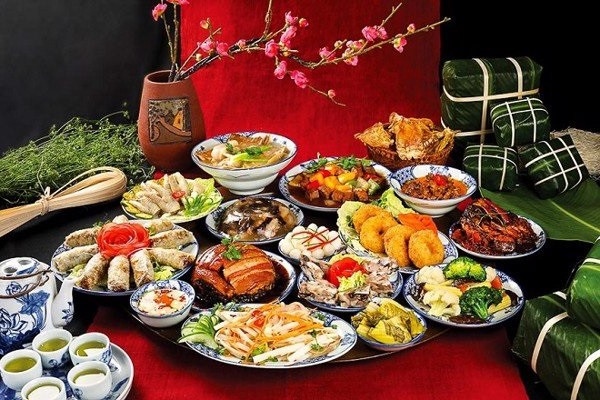
According to Northern Vietnamese beliefs, Tet feast tray typically comprises 4 plates and 4 bowls, symbolizing the four pillars, four seasons, and four directions. Many families may prepare a larger feast with 6 or 8 plates and bowls, hoping to attract wealth and good fortune in the new year.
Traditional Tet customs in the North
Dedicate Land Genie and Kitchen Gods
One enduring tradition passed down through generations in Northern Vietnam is the Ritual of Worshiping the Kitchen Gods, which takes place on the 23rd day of the twelfth lunar month each year. Essential items for the ritual include the worshiping feast, a set of three ceremonial costumes, and live carp. After the ceremony, people release the carp with the belief that it transforms into a dragon, escorting the Kitchen Gods back to the heavens.
Hang the couplet on the door
In the days leading up to Tet, people in Northern Vietnam also visit markets to buy flowers for decorating their homes. They seek out calligraphy masters to request auspicious couplets to hang in front of their houses, hoping for a year filled with positive things for their families.
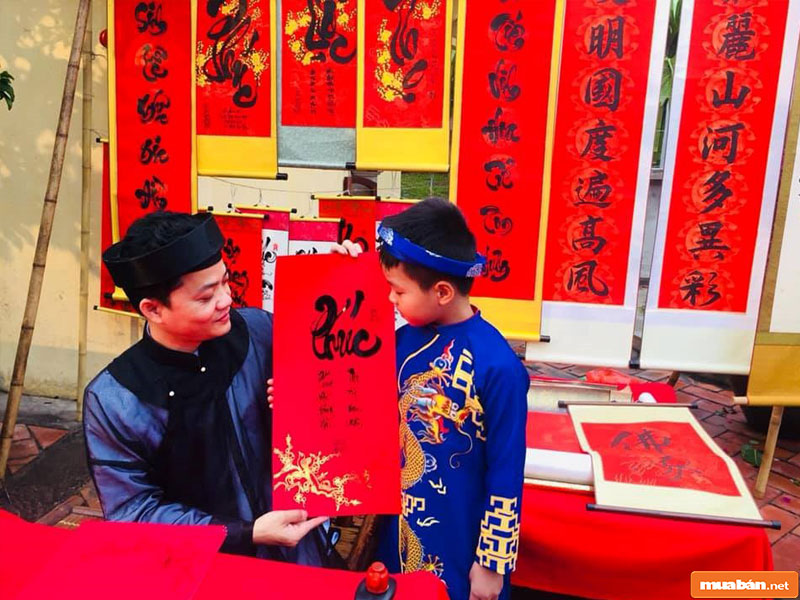
Gather together for a meal
Not only in Northern Vietnam but also in all other regions, Tet is considered a time for family reunions. Therefore, during the New Year’s Eve or New Year’s Day feast, all family members come together, share meals, converse, and exchange good wishes.
Pray for fortune, pray for peace
Seeking prosperity and peace through spiritual activities is an essential tradition in Northern Vietnam after the New Year. In the early days of the year, people often flock to temples and large pagodas to offer rituals and pray for good fortune in the upcoming year.
Taboos in Tet customs in the North
In Northern Vietnam, the traditional belief in “There is worship, there is sacredness, there is abstinence, there is goodness” is passed down through generations. Some prohibited activities in the region include:
- Avoid hanging paintings depicting unlucky scenes such as lawsuits or fights to prevent bringing negative energy to the family in Northern Vietnam.
- Avoiding trash disposal and house cleaning during the initial three days of the new year is a practice to retain luck and prosperity within the home.
- Avoid placing water and fire at the beginning of the year to protect luck and prosperity as you enter the new year.
- People who are in mourning or are not astrologically compatible with the host should avoid visiting at the beginning of the year to prevent bringing in negative energy for others.
- Avoid breaking cups, bowls, and plates, and steer clear of negative events like arguments or scolding during the New Year.
Tet in the central region – Cultural interference between the North and South
Tet in the Central region is an event filled with an atmosphere of profound love. Situated geographically in the middle of the country, Central Vietnam is where cultural influences from different regions converge, giving rise to unique and diverse Tet customs. Here, people retain traditions from both the North and the South, creating a rich Tet tableau, aiming for a prosperous and secure New Year.
Colorful Tet flowers
In contrast to the elaborate selection of peach and kumquat trees in the North, people in the Central region tend to opt for simpler flower decorations during Tet. Despite their simplicity, Tet flowers here are chosen thoughtfully. The Tet flower markets in the Central region are vibrant, full of colors, creating a fresh and joyful atmosphere.
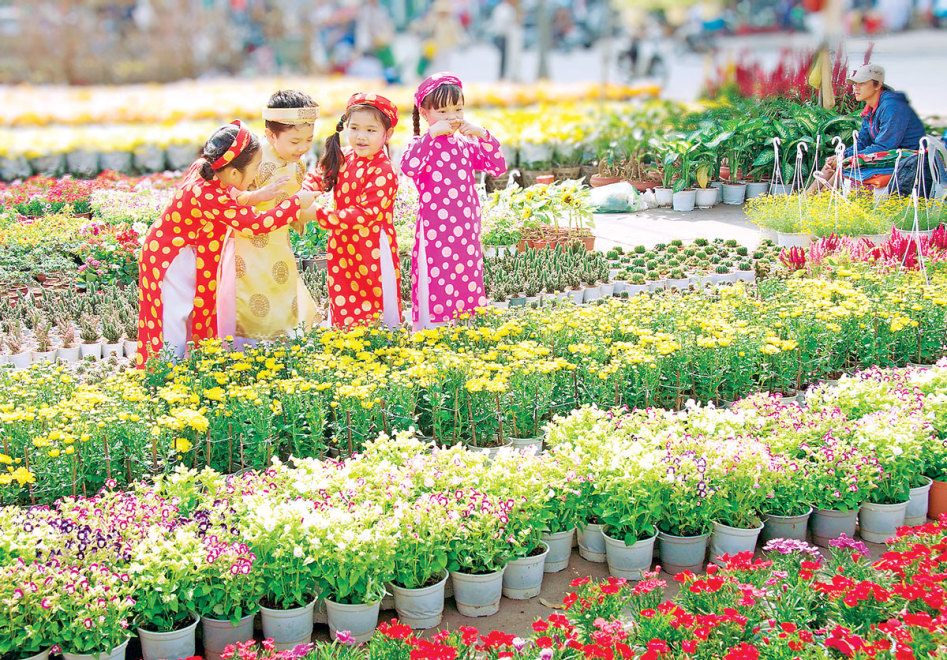
Five-Fruit tray
Five-Fruit tray in the Central region is typically less intricate or laden with complex symbolism compared to the North or South. Instead, it is a sincere offering to honor ancestors. Avoiding the use of green bananas due to their bitter taste, the tray usually consists of sweet and fragrant fruits, symbolizing joy and prosperity.
The Tet feast in the Central region is simple yet harmonious.
The Tet feast in the Central region often bears the mark of simplicity and harmony. Especially with delicious and soft banh tet and banh chung, these are essential parts of the Tet meal in the Central region. Provinces, particularly Hue, tend to prepare elaborate meals, presenting a variety of delicious dishes. However, the ingredients remain simple, such as chicken, pork, noodles, pickled vegetables, along with various rolls and stir-fries, creating a tasty and balanced meal.
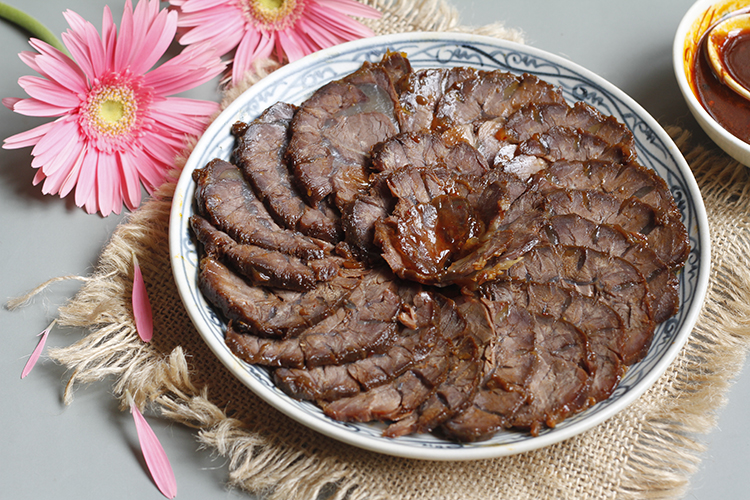
Tet in the Central region is an occasion for people to express love, unity, and gratitude to their ancestors. Each cultural aspect and tradition leaves a unique imprint, making Tet here distinctive and rich in cultural significance.
Avoidances on Tet in Central Vietnam:
In the Central region, during Tet Nguyen Dan, traditional food taboos have become an integral part of the rituals and spirituality of the people. Specifically, some specific dietary restrictions include:
- Avoid eating shrimp dishes:
People often avoid eating dishes made from shrimp, believing that doing so may bring bad luck, similar to the backward movement of shrimp.
- Avoid eating balut eggs and duck meat:
Many people also exercise caution and avoid eating balut eggs and duck meat at the beginning of the year, as they believe it could invite risks and difficulties to the family.
- Avoiding wearing white clothes throughout January:
In some regions, people refrain from wearing white clothing throughout the first lunar month because the color white is considered a symbol of mourning and may bring bad luck.
- Avoiding cleaning the house on the first day of the Lunar New Year:
Similarly to the North, people in Central Vietnam also avoid sweeping the house on the first day of the lunar new year because they believe it could sweep away good luck and prosperity, altering the favorable presence of the God of Wealth at the beginning of the year.
Tet in southern Vietnam – The blossoming yellow everywhere
While the North dazzles with peach blossoms, in the South, the distinctive beauty of Tet is vividly expressed through streets adorned with the golden hues of apricot blossoms.
Apricot blossoms infiltrate every nook and cranny, streets, and courtyards
In Vietnamese folklore, apricot blossoms are classified into the “four nobles” along with pine, chrysanthemum, and bamboo. Each type symbolizes positive qualities of human character. The golden apricot, representing wealth and nobility, holds special significance in the hearts of people in the Southern region.
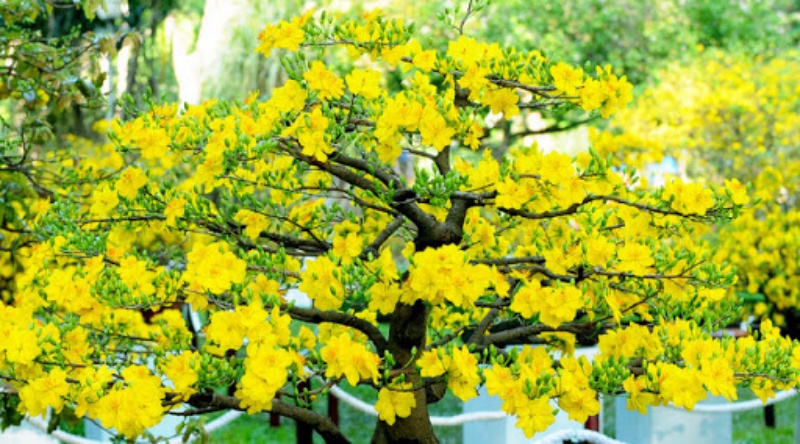
From the 12th lunar month, homes adorned with apricot blossoms start trimming the leaves, anticipating the flowers to bloom just in time for Tet. Conversely, families without apricot trees prepare small potted plants for decoration, hoping for a peaceful new year.
Five-fruit tray
In the South, the five-fruit tray traditionally includes four types of fruits: mangosteen, papaya, coconut, and mango. The pronunciation of these fruits sounds like “Pray for enough to use” in Vietnamese, symbolizing the wish for a year of abundance and prosperity. Additionally, the tray may include other fruits like pomelo and watermelon to enhance its symbolic meaning.
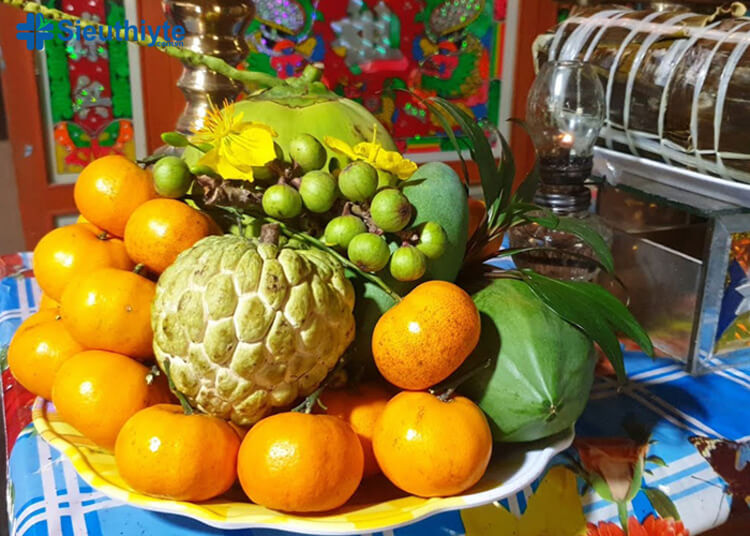
Climate and cuisine shape the distinctive Tet Feast in Southern Vietnam:
In Southern Vietnam, the Tet feast goes beyond being a decorative meal; it carries profound spiritual meaning and symbolizes resilience and vitality.Tet Cake, considered a symbol of robust life and perseverance, is often wrapped, offered in rituals, or given as gifts to relatives and friends during Tet. Some provinces in the South maintain the tradition of wrapping Tet Cake with banana leaves, glutinous rice, black beans, peanuts, and coconut milk, creating visually appealing and flavorful delicacies.
Tet Feast in the Southern Vietnam often reflects diversity and richness, not confined by traditional rituals. Therefore, besides the iconic bánh tét, there are various distinctive dishes representing different tastes, all carrying special meanings such as:
- Meat braised in coconut milk
Caramelized pork in coconut water is considered a symbol of luck and prosperity. In the Southern Vietnam Tet feast, this dish is often prepared simply with pork and duck eggs. Presented in square and round shapes, symbolizing earth and sky, it signifies the embodiment of family and parental love.
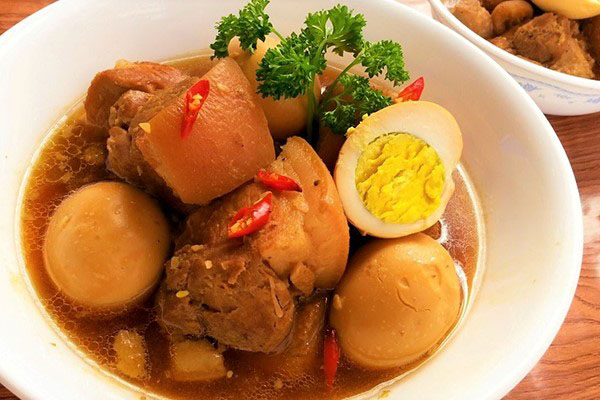
- Bitter melon soup
Bitter melon soup is not only a delicious dish but also carries the belief of dispelling hardships, welcoming the new year with luck and peace.
- Radish soaked in fish sauce with dried shrimp
Pickled radish with fish sauce and dried shrimp is somewhat similar to pickled vegetables in the North. With its spicy, sour, and crunchy taste, these dishes help balance the richness of starchy and oily foods in the feast.
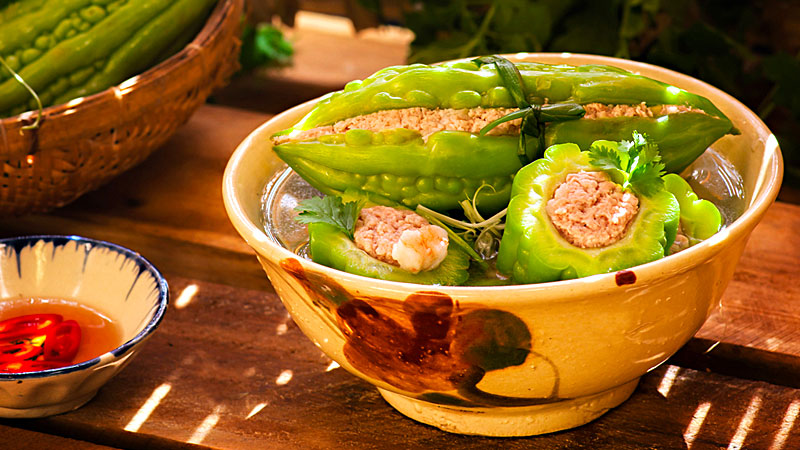
- Sausage
Sausage, with its red color and shape resembling a string of coins, is a symbol of luck and prosperity in the minds of people in the South. It is considered a wish for good fortune in the new year, aiming for wealth and prosperity, making it an indispensable dish for Tet.
Avoidances and taboos on Tet in the South
- Returning home before New Year’s Eve
People in the South believe they must return home before the New Year’s Eve, or else the new year will bring challenges and a difficult life.
-
Putting away the broom after sweeping the house:
That belief stems from the idea that leaving the broom out on Tet day may expose the family to the risk of theft or loss of property in the new year.
- Not leaving the rice grinder empty
Because it symbolizes an empty harvest. Instead, they leave some rice in the grinder, hoping that the new year will bring a bountiful harvest and abundant life.
- Avoid sweeping the house, breaking items, and dishes.
Avoiding sweeping the house is considered a superstition to prevent the loss of luck and prosperity in the new year. People in the South also avoid breaking items and dishes to ward off bad luck and misfortune.
In the S-shaped country, each region offers a unique Tet atmosphere, but the common thread is the joyful and fresh spirit that fills the narrow alleys and reflects in the faces and eyes of everyone.
Contact Passionate Travel
Hotline: (+84) 852 489 689
WhatsApp/Zalo: (+84) 852 489 689
Email: sales@passionate-travel.com

 VIETNAM
VIETNAM LAOS
LAOS CAMBODIA
CAMBODIA THAILAND
THAILAND